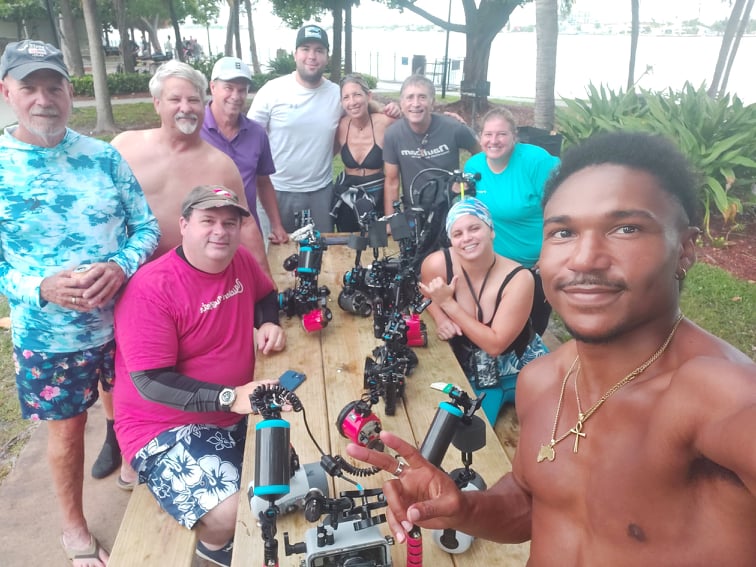As you may know, Florida can be a very …interesting place. For instance one minute it’s sunny and the next it’s pouring rain. Or you see people driving by with a whole stadium built in the back of their pickup truck blasting country tunes. There is always something to see here. However, one of the coolest things about this place is that no matter where you are in Florida you are never more than 60 miles from the ocean! You know what that means right? Plenty of scuba diving! Florida is one of the US’s premier diving hubs because there is always something to see under the warm tropical waves. For me, that means Florida is a great place to practice my underwater photography skills. So while I was there, I thought there’s no better way to capture what’s behind the blue other than grabbing a camera rig and wading out into the water to find what awaits.

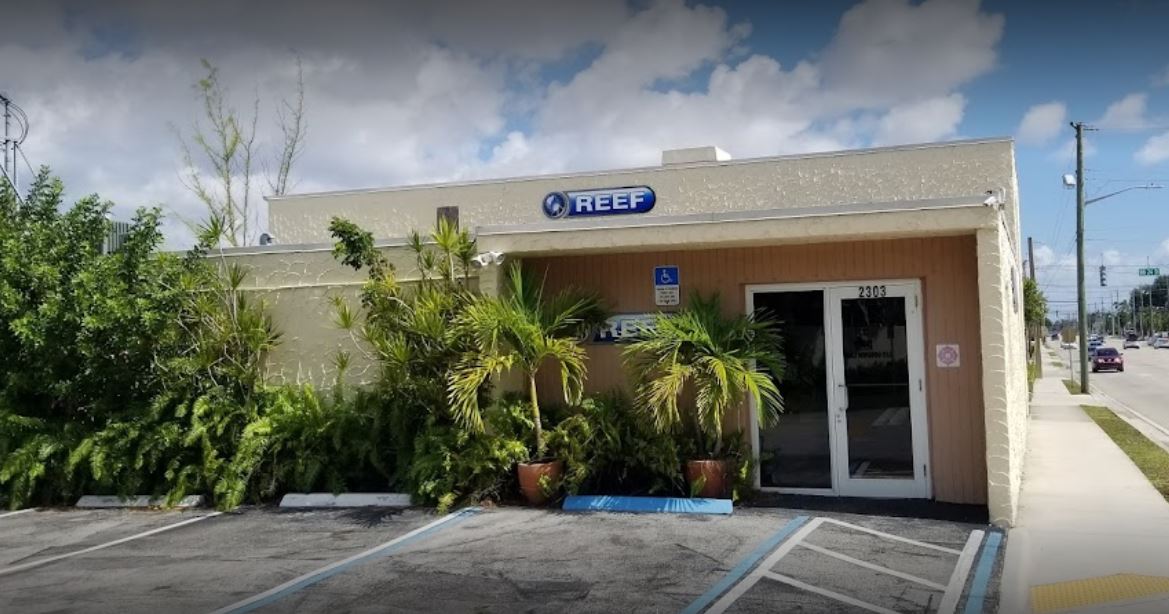
With that in mind, who better to help me learn more about this than my camera sponsors Reef Photo and Video! I was so thankful that they were willing to do a short weekend-long workshop with me to practice my macro photography! I happily met up at Reef Photo and Video in Ft. Lauderdale with Kevin Palmer who I’d been speaking to throughout my year, along with several other classmates who were interested in learning more about underwater photography!
During our first class, we learned various different components about using light underwater. We talked about Ambient (natural light), Strobe (artificial light), or Balanced (which could be a use of both). In order to take advantage of what type of light is going to get the best photo, we later went over the three pillars of manipulating light using an underwater camera. These three pillars are ISO, Shutter Speed and, Aperture.
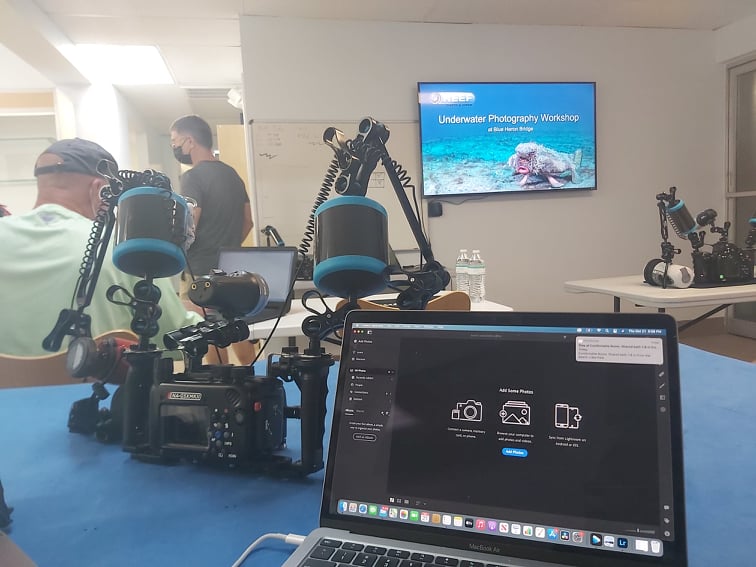
Working at the Workshop
In very basic terms, ISO is a camera setting that will brighten or darken a photo. As you increase your ISO number, your photos will grow progressively brighter. For that reason, ISO can help you capture images in darker environments, however, raising your ISO too high can mean washing out your photo or giving it a lot of noise or grain as you often see with night vision goggles. Shutter speed is the length of time the camera shutter is open, exposing light onto the camera sensor. While long shutter speeds can give the effect of a motion blur, a short shutter speed will help capture your subject in action while still keeping the image sharp. Aperture affects the depth of field for your photos or, in other words, the range between the nearest and farthest objects in focus within a picture. While a wide aperture blurs the background to help the in-focus subject of the photo pop, a narrow aperture helps sharpen the background and can blur the foreground.
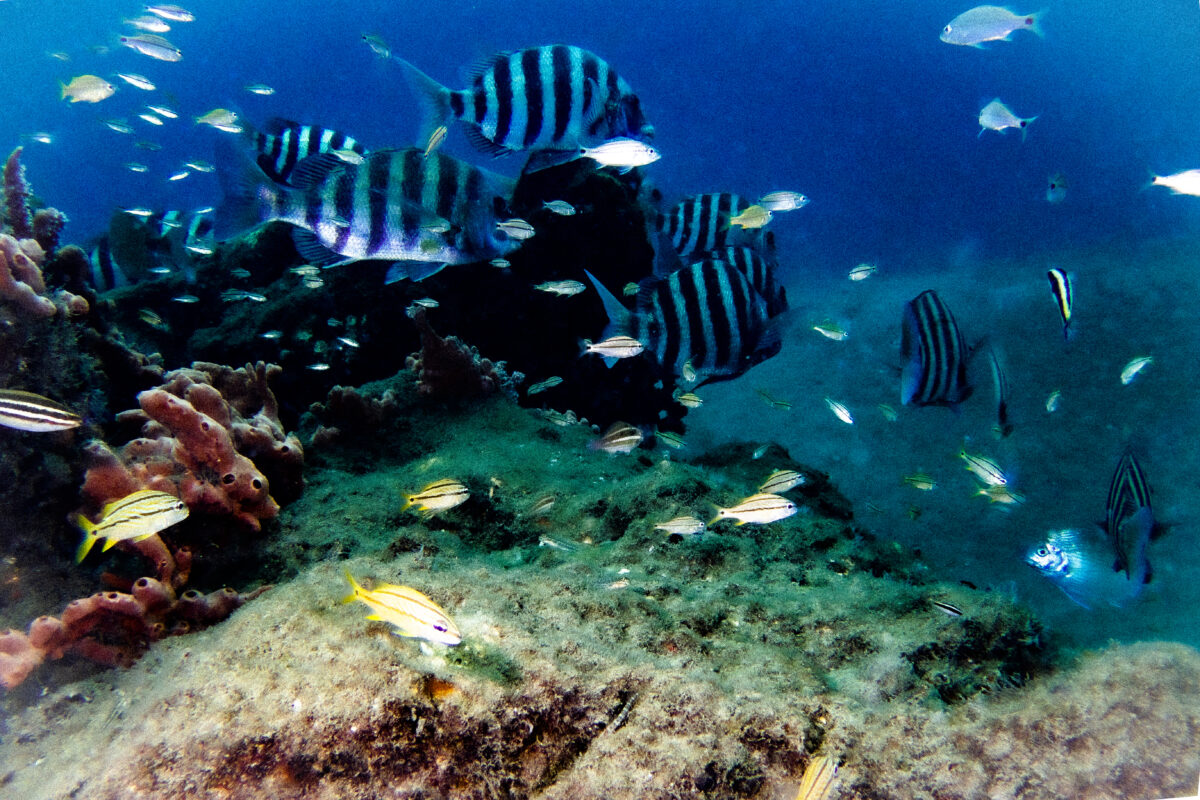
These three components were going to be essential in my journey to get some decent macro shots. Of course, there were other components that we looked at, like composition and the golden mean, the rule of thirds, and the Fibonacci spiral (I know you’re thinking…the what?). However, my main concerns were these three pillars.

The first day started a bit rough (as usual, right?) We met this time at the dive shop Pura Vida Divers in Palm beach and were going to be diving under the Blue Heron Bridge. We talked over the game plan, headed out there, got suited, and waded out into the water. We finally went under and I started my camera, only to find that the battery was too low! Begrudgingly, I had to get back out, drive back to the dive shop, grab my other battery then drive back, suit back up, and THEN continue taking pictures. It was a tedious process and an annoying mistake but thankfully, I still had plenty of time to explore and find things.
The first time I went out specifically to take pictures underwater, my goal was to just kind of capture anything that I could get in front of my camera. This time, however, I had specific goals. I wanted to focus specifically on mostly mobile animals. I was going to build my way up from slow mobile animals to getting an up-close with an actual fish that would be a little more fast-moving and harder to capture. In pursuit of this goal, one of the first things I ran into was the many arrow crabs that hide in the various nooks and crannies of the reef. They were fairly easy to photograph due to their reluctance to move and thus were really helpful for me to gather my bearings. When doing macro photography it’s important to be still, with good buoyancy, to be patient, and to focus. Once I started to get back in the groove of things, I moved around and caught sight of all sorts of creatures that you wouldn’t have noticed otherwise.

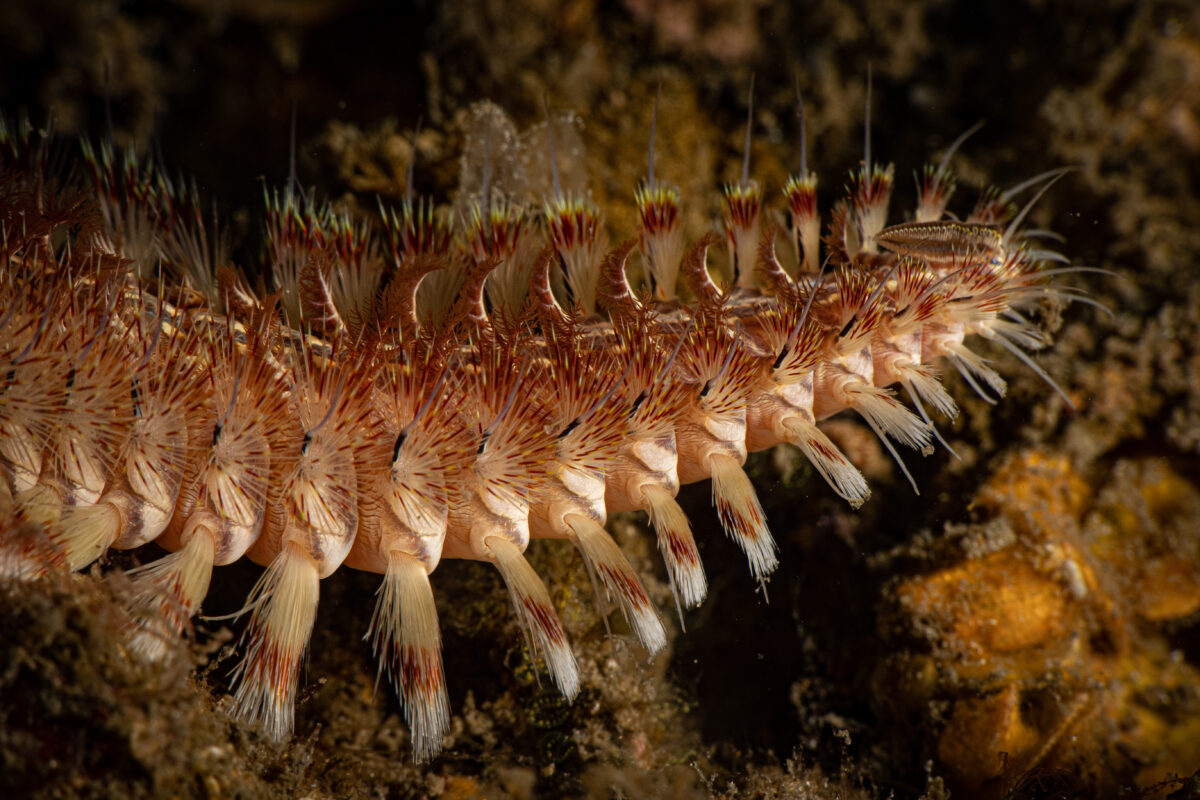
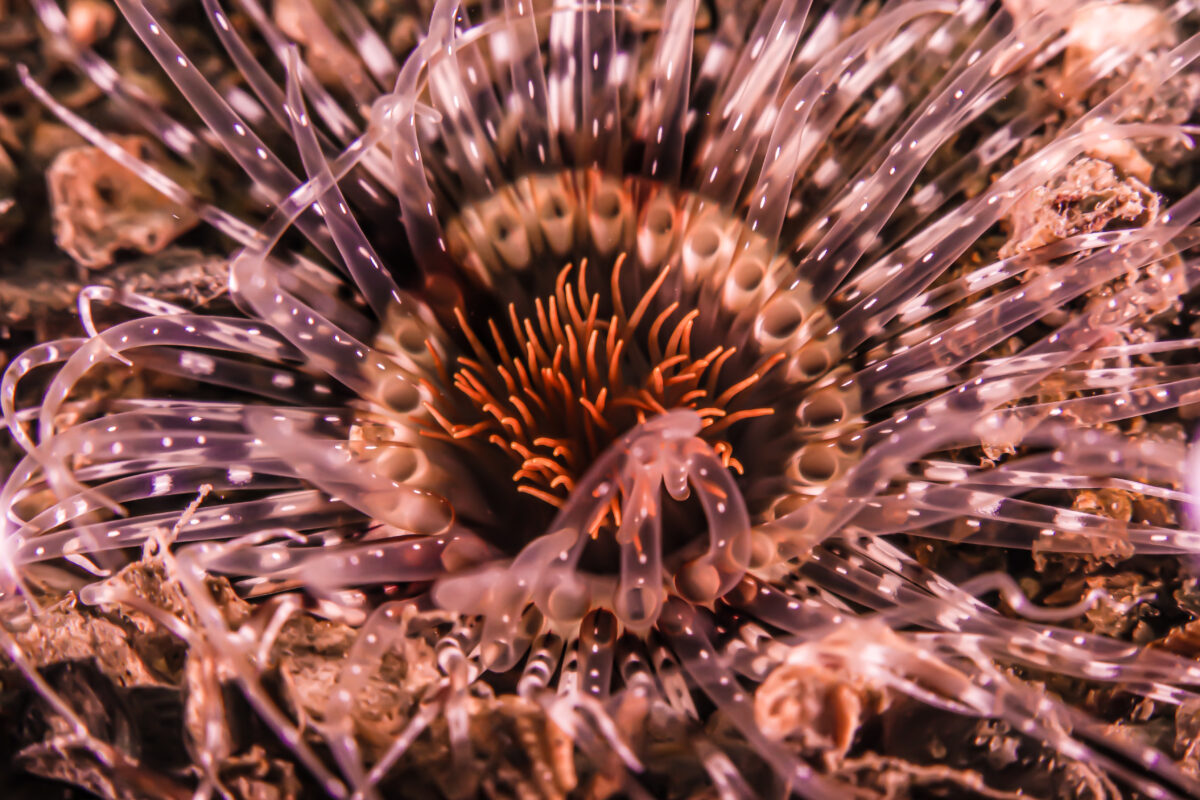



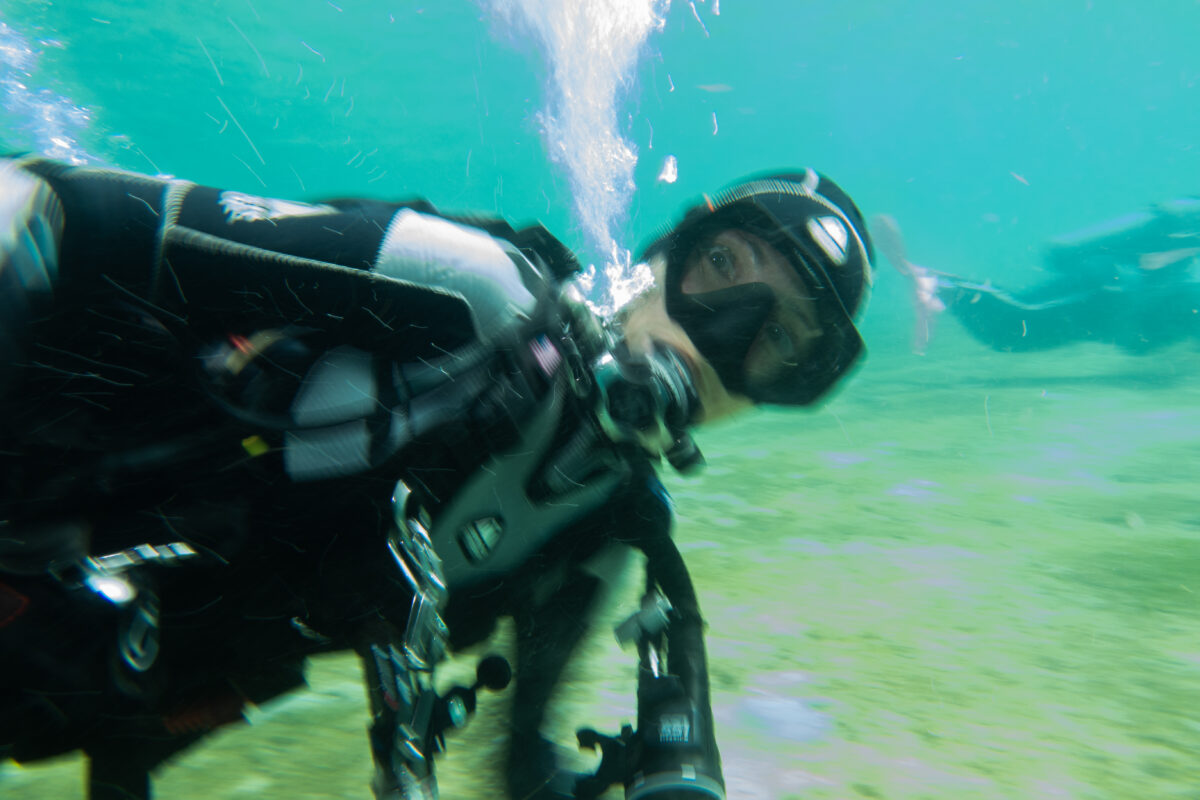
However, I was extremely lucky that Tanya G Burnett was there to help us, because as I was swimming by, she pointed out my favorite animal in all the world–The Octopus. This one was hidden in a little hidey-hole and poking out just enough to see what was going on. Once I saw the octopus, I sat next to it and started snapping away with my camera. We were equal parts curious about each other. At some point, it was just curious enough to reach an arm out and pull me closer to it. Unfortunately, it snuck another arm to pull me in where I couldn’t see, which startled me. I shook a bit out of surprise and in turn, it became startled as well, but not enough to fully retreat. I could tell it was still thinking about what this giant, bubbly, floaty thing was in front of it and why a flash of light would happen every once in a while around this creature. It was so fascinating that I honestly could have stayed there all day. It wasn’t until another diver showed up to take a picture that I figured I should share and moved on.
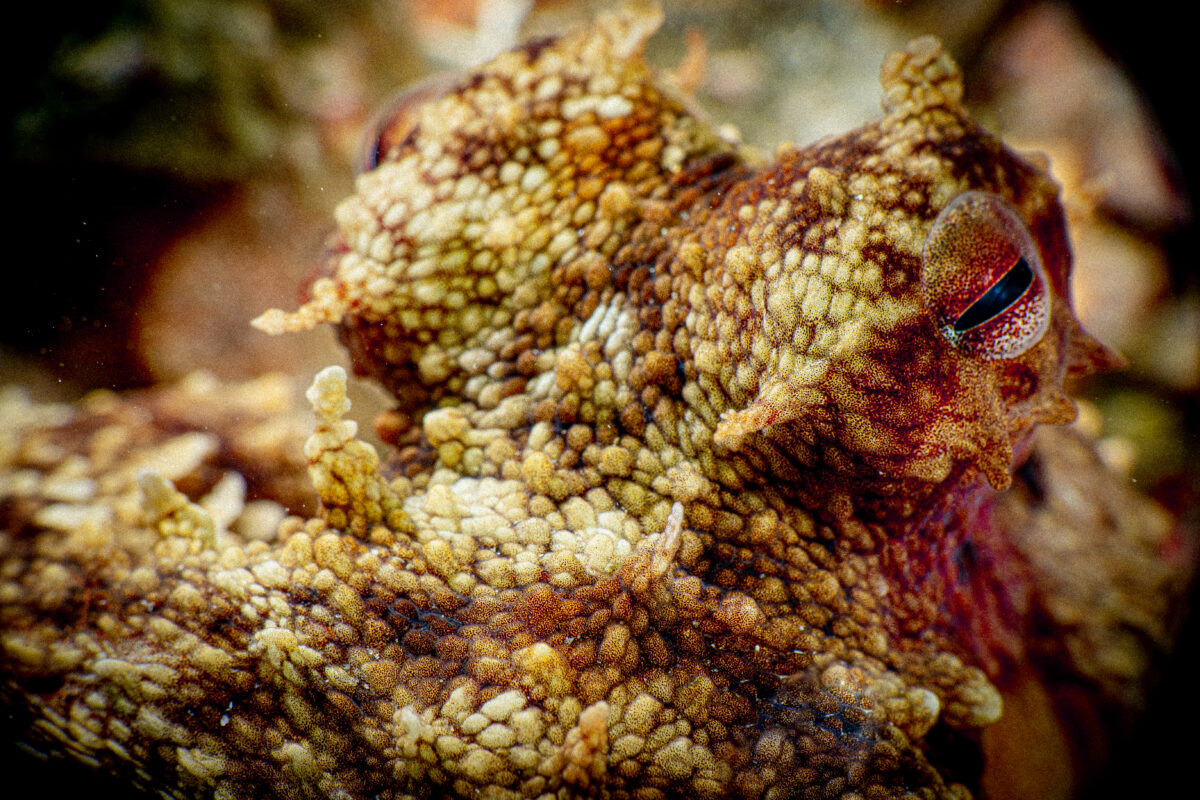
My Fave
On the rest of the dive, I caught sight of some pipefish, a pair of mating crabs, a southern stingray, some scorpionfish, and several yellow-spotted stingrays. There was so much to observe. I got some decent photos of the reef fish as well. When we finally got out, we went over some of the shots that we had taken and did some more lecture work with Kevin. It was wonderful to see what everyone had seen. One woman there, who was really talented and experienced, had captured a picture of the bumblebee shrimp, which are extremely tiny and hard to find. Of course, when we all went home, I knew my goal before the end of my time here was going to be to find one as well.

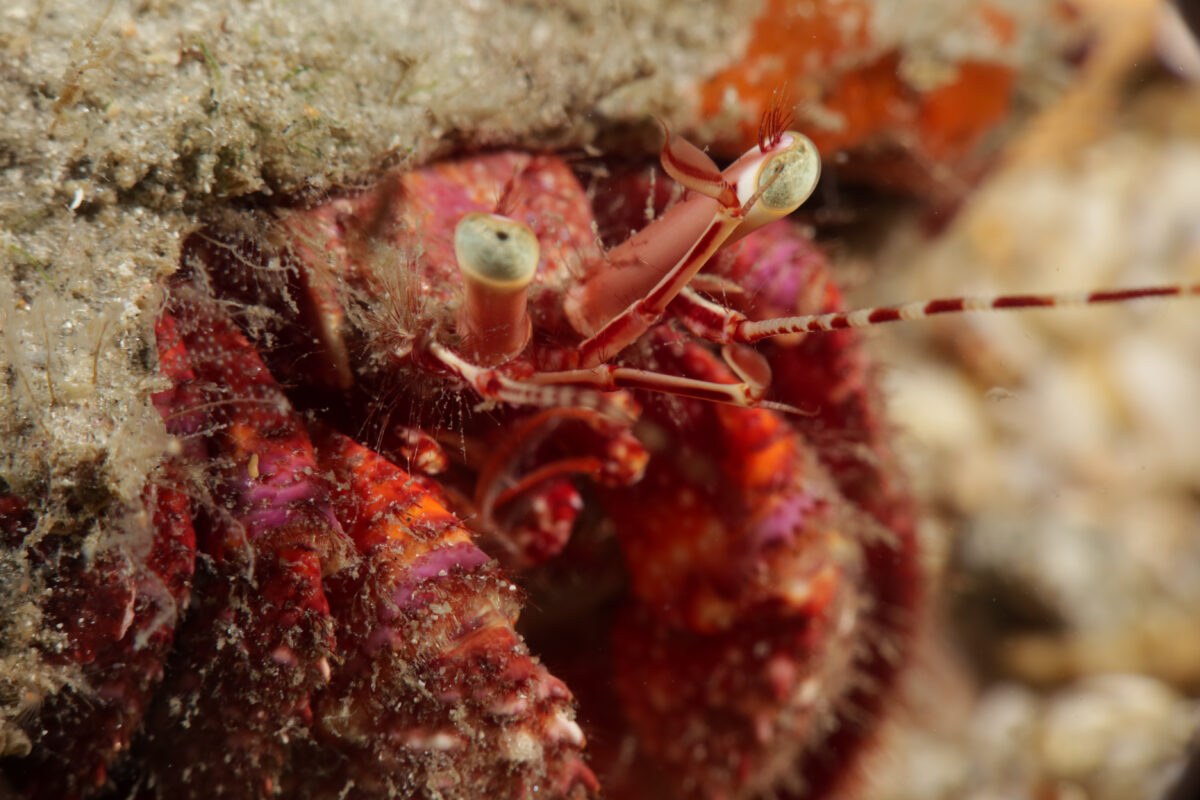

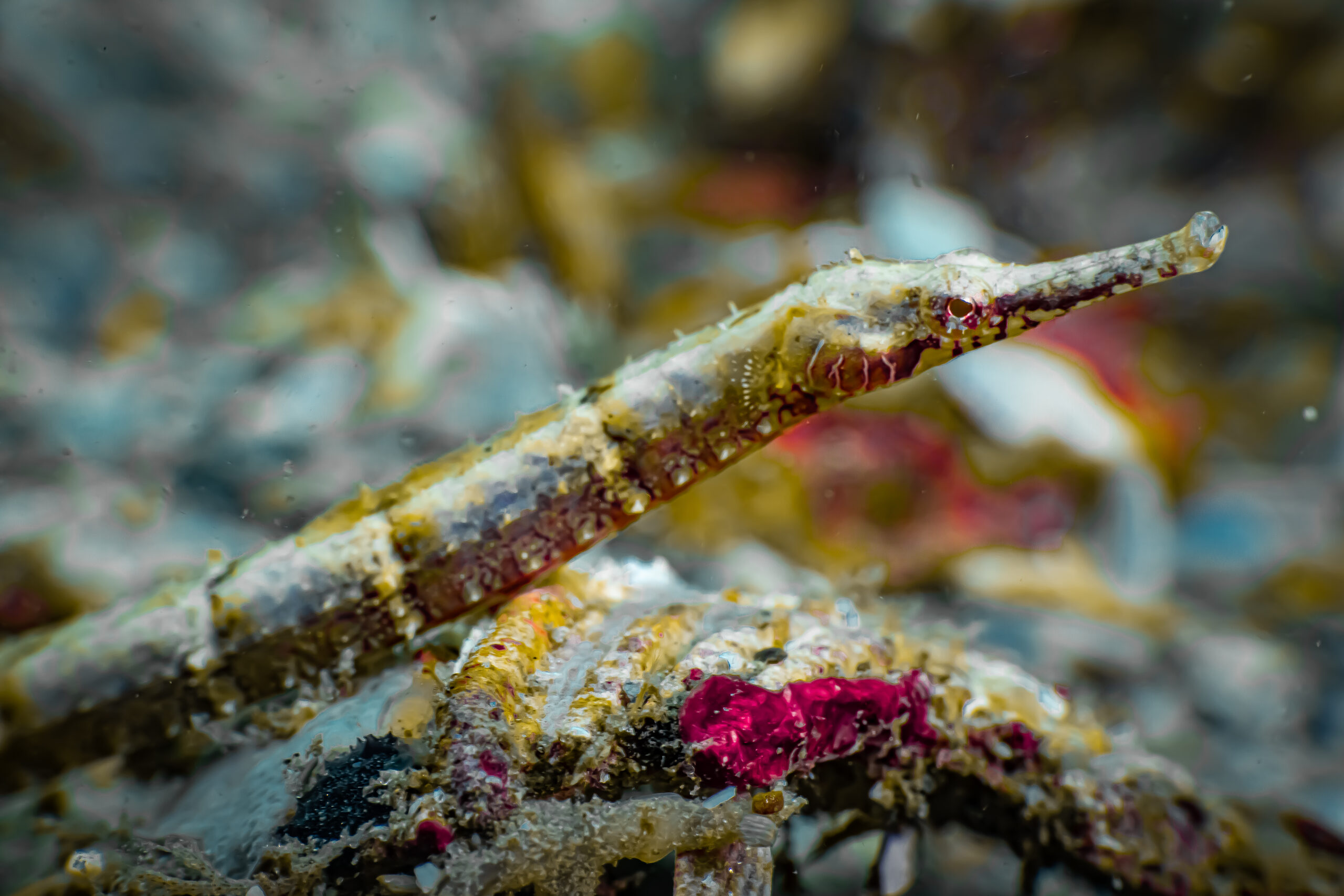
The next day came once again with its own set of challenges (a surprise to no one). After my first experience doing underwater photography, I came to the conclusion that I wasn’t as fond of strobes as I was of my video lights which were given to me by Light and Motion. While the strobes could sometimes be hard to judge in terms of where the light was going to hit the subject, video lights, are constant and you can always see what your light is doing. However, for what I was doing now, video lights wouldn’t cut it. When I asked Kevin why this was I learned that the lights from strobes are better at freezing the movement of the subject and that even the most powerful video lights cannot match the output of even a relatively small strobe. This, combined with the fact that video lights give constant illumination, means they can’t freeze movement the same way that a flash does. However, I was used to using my video lights which have a built-in battery that lasts for days on end, and my strobes were a bit needier and required AA battery replacements. Hence, after making sure my camera was charged this time as we got into the water and swam around a bit, it wasn’t long before my strobes died. Dios Mio! This time I had all my camera gear in my car so I quickly got out of the water and replaced the batteries then jumped back in. No biggie! Test your gear before you take it underwater! Lessons learned.
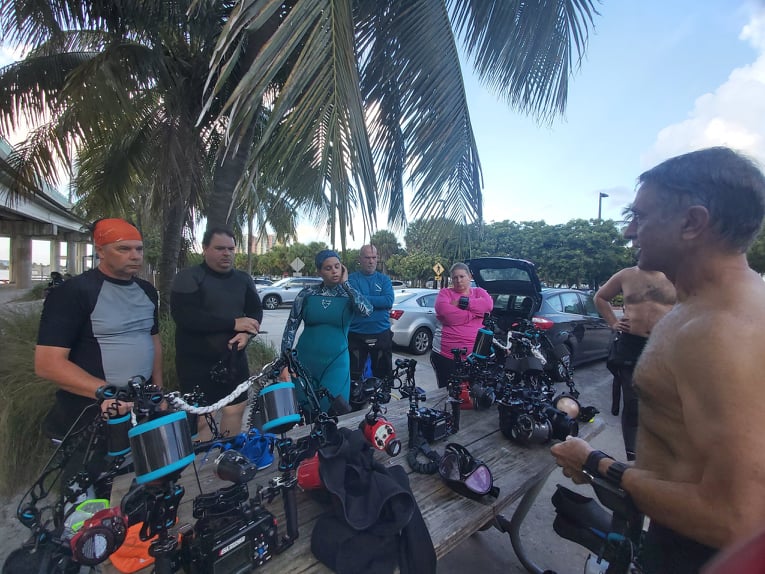
Just going over the plan
This time we dove around a different part of the bridge where I was able to find so much life! I got some great images of some giant hermit crabs, more scorpionfish, some yellow-spotted stingrays, jellies, a giant snail, and even managed to capture some fish, including the big eye of one. In terms of getting active live subjects, it was a pretty good day. I was even able to get a picture of some of the animals hiding between the pilings like a lobster and a small eel. It was a good day for photos and I was proud of myself for taking them.
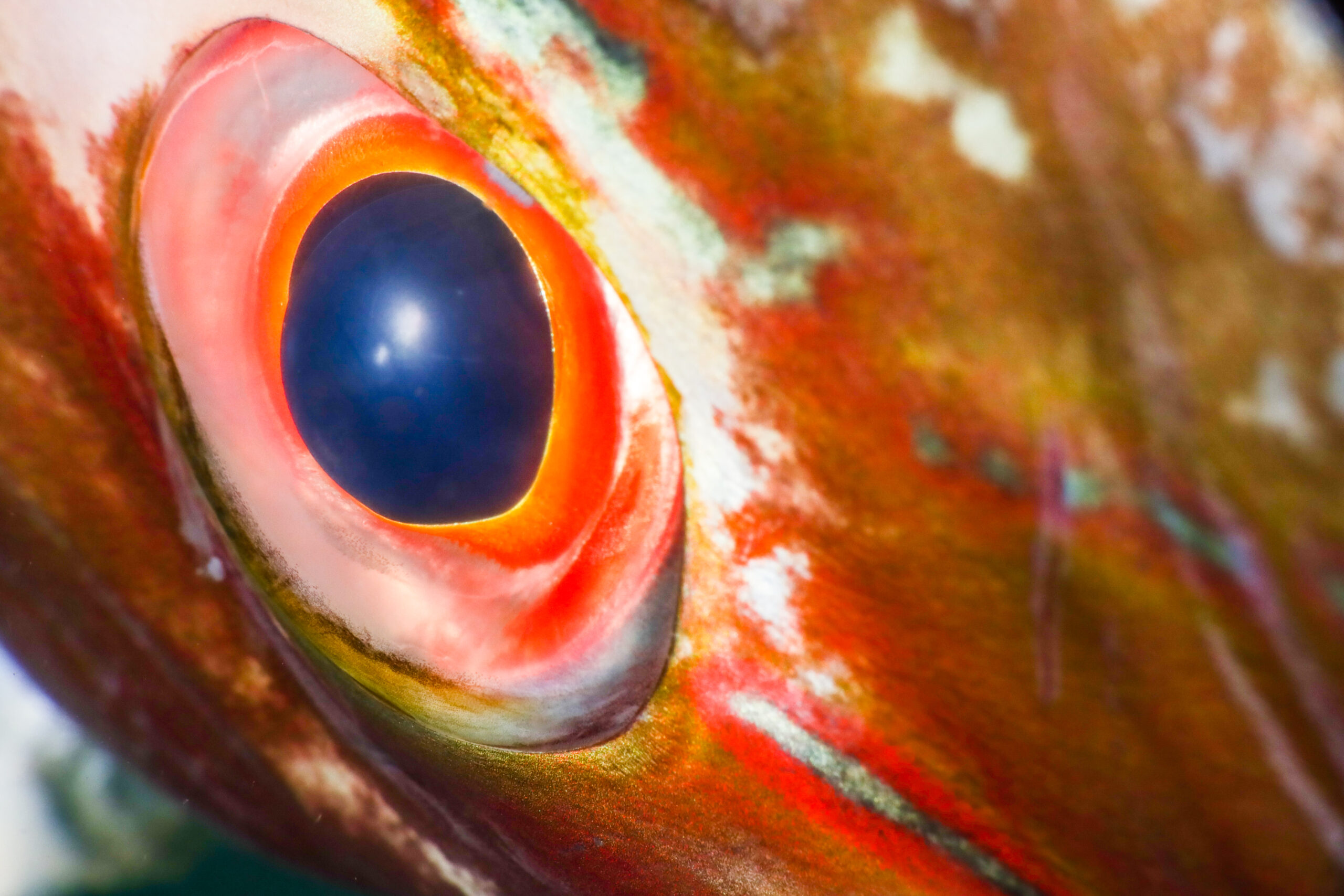

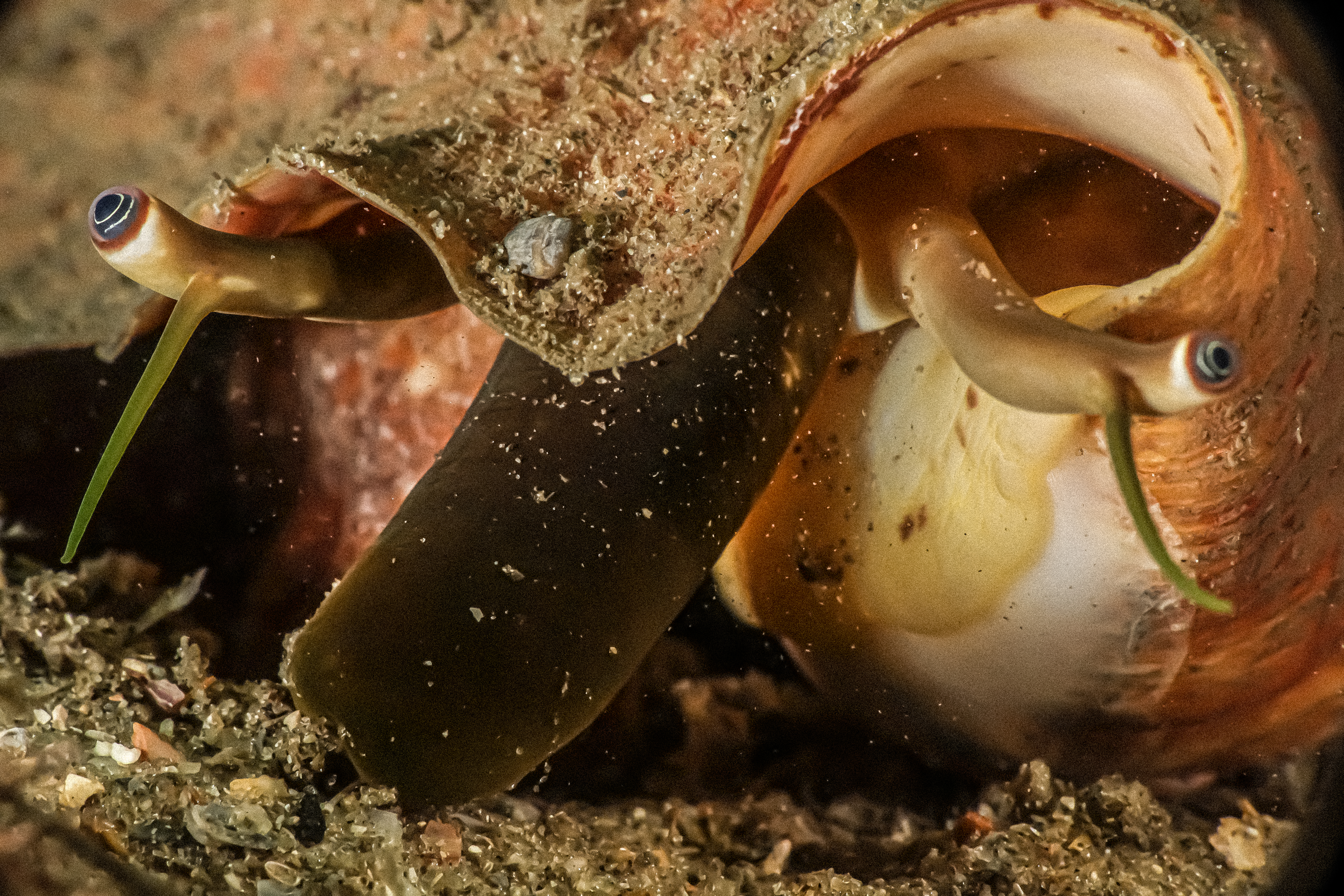


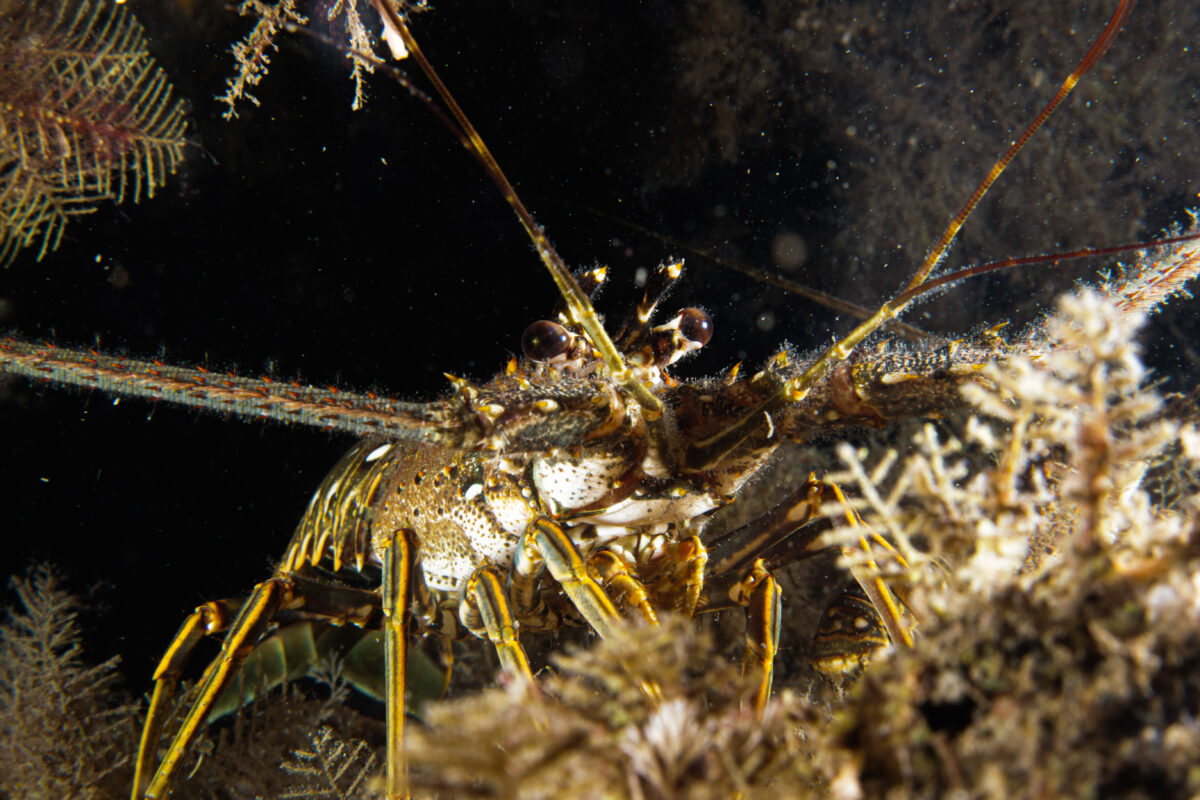
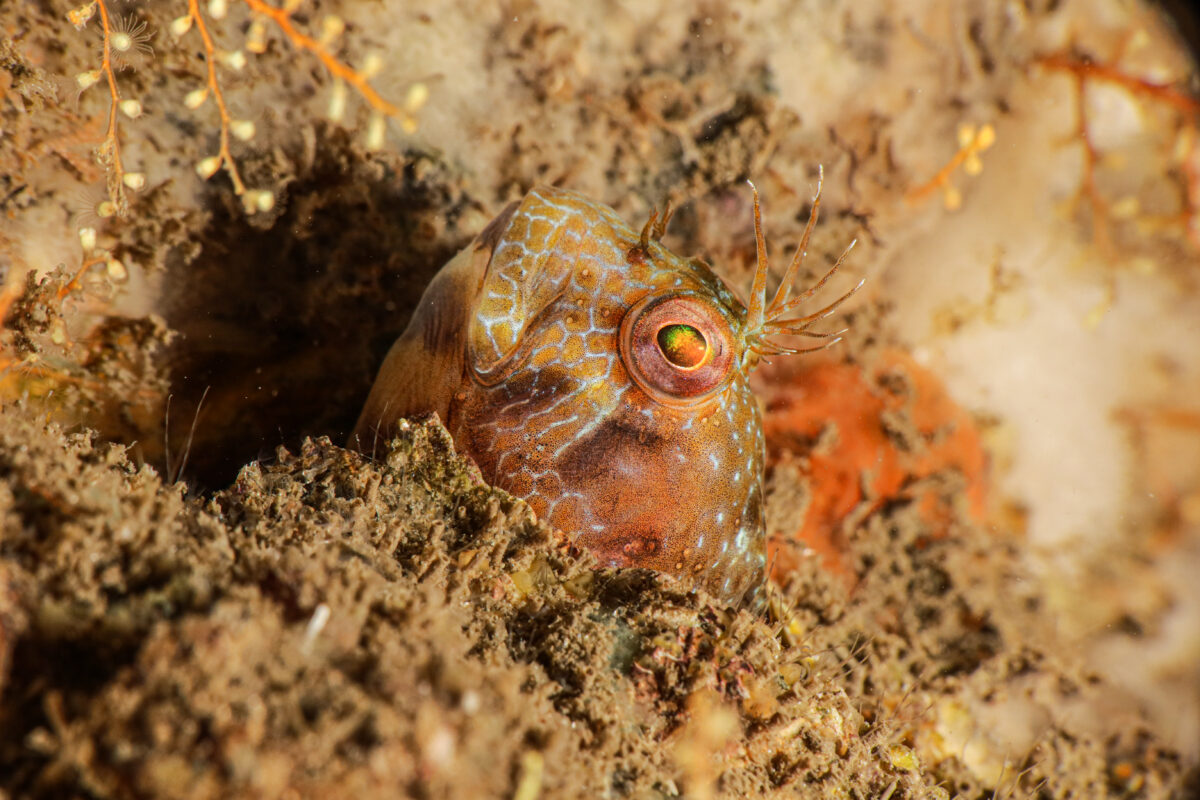
However, the least exciting part of the day was after the dive, when the upper buckle that straps to the top of my BCD to the tank broke! Once on the surface, I took my BCD to Pura Vida to see if they had the correct part but unfortunately they didn’t. As I asked more about it, it seemed more and more like I was going to have to order the small piece online which would take time, and if I had to dive without it in the following days it would have also taken peace of mind. Though I was determined to try to look at the local dive shops around, I was not holding out much hope. Still, I trudged on to the closest dive shop that might be able to help me. I ended up at a dive shop named Force E where I met a woman named Meg Loveless. When I told her my problem she mentioned that they might have something around that would work. They looked around for a while, and it seemed it would be as I had predicted, until she told me to hold on and that she would look one more time in the back. A minute later she pulled out the exact piece that I needed and gave it to me for free! I was so thankful for her vigilance and kindness! Thanks again, Force E for the rescue!
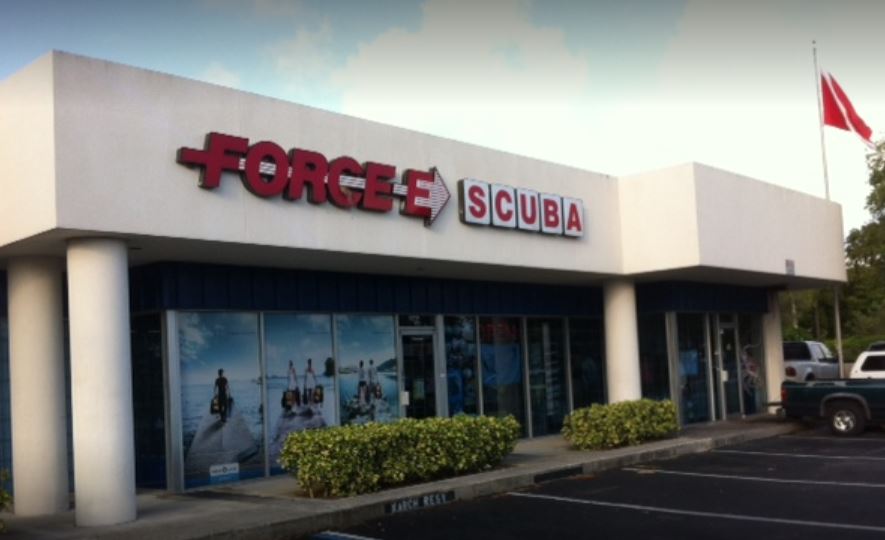
Thanks Force E Scuba!
I was now ready for the last day of diving. I had everything charged. I had all the pieces and parts together and there were going to be no flubs this time. We got in and got started. I was fairly successful with the camera and practicing with it for the past two days prior was really helpful in allowing me to understand how to achieve a better shot. Even though the sea life I found wasn’t as diverse as it had been the days before, ( bristle worms were literally everywhere) I felt like the quality of my photos had improved. I was able to get pictures of some small fish that were really hard to spot. I found another spotted eel and even a little nudibranch. However, the real highlight of my last dive was finding…. you guessed it– the legendary bumblebee shrimp! Mission accomplished!
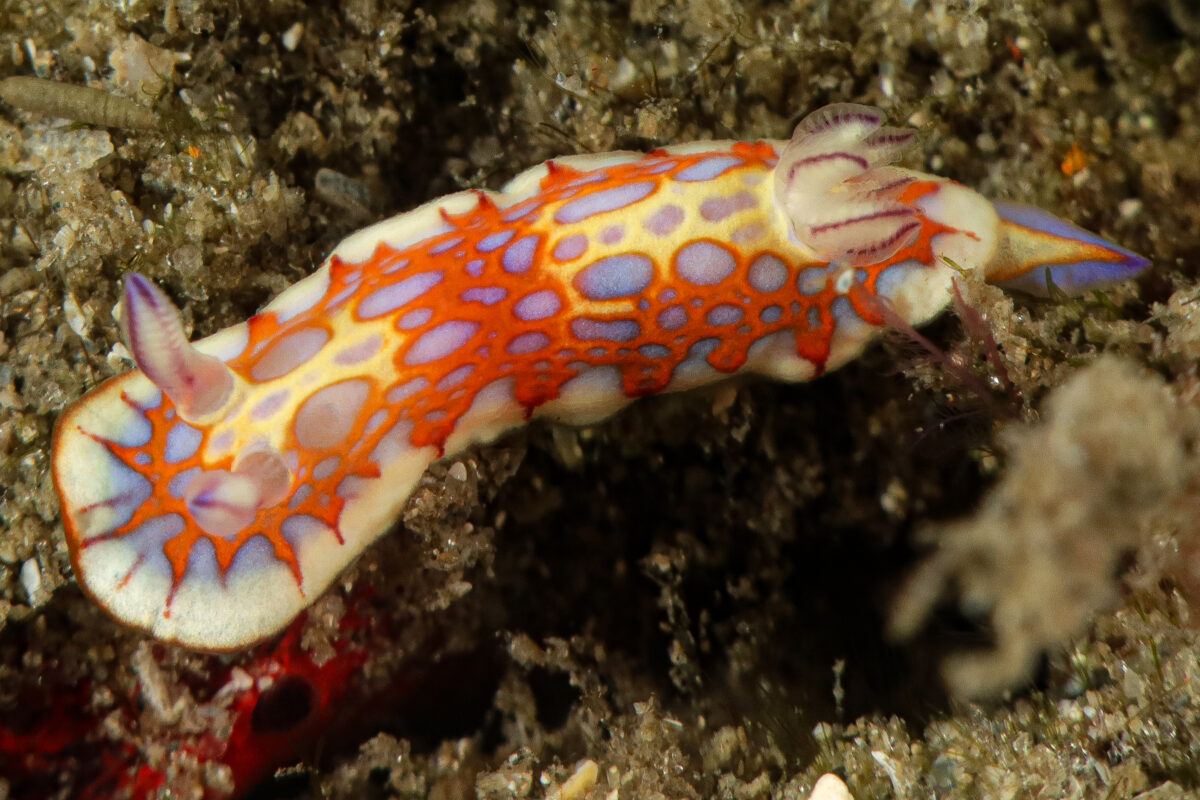




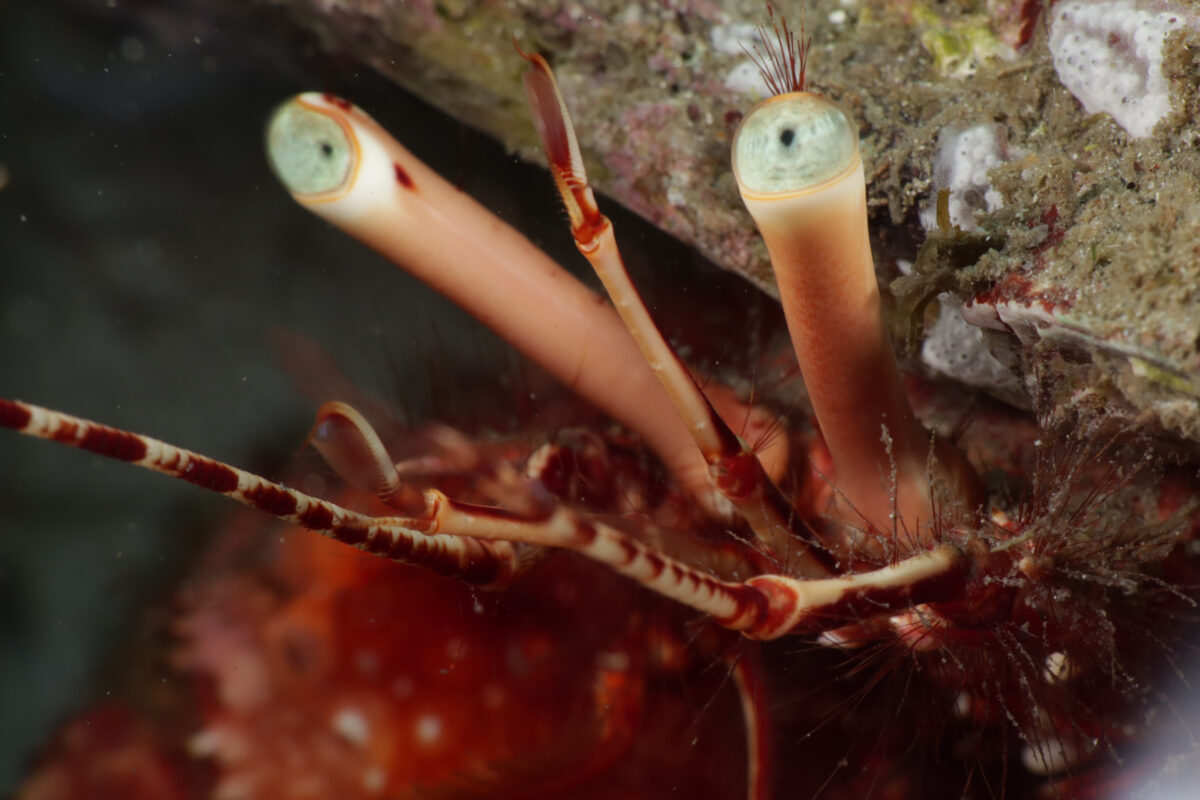

I am so thankful to be able to spend time with such a great group of people and to learn so much. I am especially thankful to my sponsors like Nauticam, Reef Photo and Video, Light and Motion, Aqua Lung, Fourth Element, and of course Rolex and the Our World-Underwater Scholarship Society for making opportunities like this possible!
